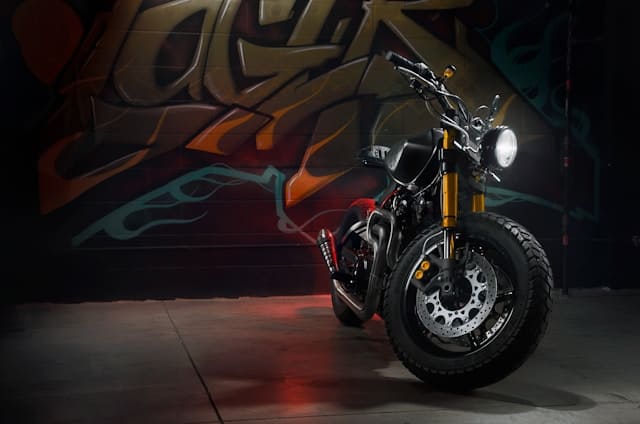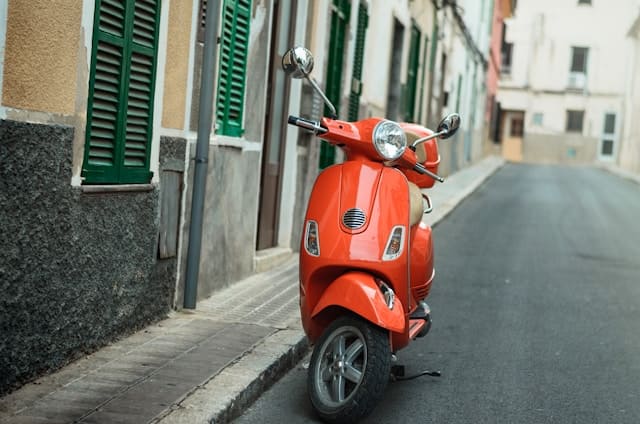
The journey of buying a new bike can feel like stepping into a jumble of choices, each promising a unique blend of performance, comfort, and style. Whether you’re a seasoned cyclist seeking an upgrade or a newcomer looking to embark on two-wheeled adventures, the process of purchasing a new bike can be both exhilarating and overwhelming. With countless options available, ranging from sleek road bikes built for speed to rugged mountain bikes engineered for off-road exploration, navigating the diverse landscape of bike options requires careful consideration of numerous factors.
In this comprehensive guide, we’ll look at the intricate world of bike buying, exploring the 18 key factors that should inform your decision-making process. From setting a realistic budget and understanding the nuances of frame materials to evaluating components, considering riding position, and contemplating resale value, we’ll unravel the complexities of bike selection to help you make an informed choice. Whether you’re drawn to the thrill of adrenaline-pumping descents, the serenity of scenic countryside rides, or the practicality of urban commuting, this guide will serve as your compass, guiding you toward the perfect bike that seamlessly integrates with your lifestyle and aspirations.
So, saddle up and prepare to embark on a journey of discovery as we uncover the essential elements of bike buying. Whether you’re seeking speed, comfort, versatility, or all of the above, arming yourself with knowledge and insights will empower you to find the bike that not only meets your immediate needs but also ignites your passion for cycling and opens the door to endless possibilities on the open road or trail.
So, let’s gear Up for 18 Vital Considerations Before Buying a New Bike:
1. Budget:
Determine a realistic budget for your new bike purchase, considering not only the initial cost but also potential expenses for accessories, maintenance, and upgrades over time. Take into account factors like your financial situation, intended usage, and long-term investment goals.
Example: If your budget is 1,000 bucks, consider bikes priced between 800 to 900 bucks to accommodate for additional expenses.
Caution: Avoid overspending on a bike that exceeds your budget, as it may lead to financial strain or regret later.
2. Bike Type:
Research and understand the different types of bikes available, including road bikes, mountain bikes, hybrid bikes, commuter bikes, touring bikes, and electric bikes (e-bikes). Consider your riding preferences, terrain, and intended use to determine the most suitable bike type for your needs.
Example: If you enjoy off-road trails, consider a mountain bike with durable tires and suspension.
Caution: Ensure the bike type aligns with your riding preferences and terrain conditions to maximize comfort and performance.
3. Frame Material:
Explore the various frame materials used in bike construction, such as aluminum, steel, carbon fiber, and titanium. Each material has its own characteristics in terms of weight, stiffness, durability, comfort, and cost. Consider factors like ride quality, performance, and longevity when selecting a frame material that aligns with your riding goals.
Example: Carbon fiber frames offer lightweight and stiffness, ideal for performance-oriented riders.
Caution: Balance the benefits of different frame materials with your budget and riding needs to find the most suitable option.
4. Bike Size:
Ensure that you choose the right bike size based on your height, inseam length, and riding style to achieve a comfortable and efficient fit. Consult size charts provided by manufacturers or seek guidance from bike shop experts to determine the appropriate frame size for your body proportions.
Example: Refer to size charts provided by manufacturers or consult with bike shop experts to determine the correct frame size for your body measurements.
Caution: Riding a bike with an improper size can lead to discomfort, fatigue, and potential injury, so invest time in finding the right fit.
5. Components and Features:
Pay attention to the components and features of the bike, including gears, brakes, suspension, tires, and accessories. Evaluate the quality, performance, and compatibility of these components to ensure optimal functionality and riding experience.
Example: Choose bikes with high-quality components from reputable brands for reliability and longevity.
Caution: Beware of cheap components or outdated features that may compromise performance, safety, and durability.
6. Riding Position:
Consider the riding position of the bike, which can vary from upright and relaxed to aggressive and aerodynamic. Choose a riding position that suits your comfort preferences, riding style, and intended use, whether it’s for leisurely rides, long-distance touring, or competitive racing.
Example: If you prioritize comfort for long rides, opt for a bike with an upright riding position and ergonomic handlebars.
Caution: Ensure the bike’s geometry and fit promote a comfortable and efficient riding posture to prevent discomfort and fatigue.
7. Suspension Type:
Evaluate the suspension system of the bike, if applicable, including front suspension (hardtail) or full suspension (dual suspension). Determine whether suspension is necessary based on the terrain you’ll be riding on and your comfort preferences. Consider factors like travel, adjustability, and maintenance requirements when selecting a suspension type.
Example: Choose full suspension bikes for off-road trails and rough terrain to absorb impacts and improve traction.
Caution: Consider the maintenance requirements and added weight of full suspension bikes when making your decision.
8. Braking System:
Assess the braking system of the bike, such as rim brakes or disc brakes, for stopping power, modulation, and performance in various conditions. Compare the advantages and disadvantages of each braking system in terms of reliability, maintenance, and compatibility with different wheel sizes and tire widths.
Example: Opt for disc brakes for superior braking performance, especially in wet or muddy conditions.
Caution: Ensure proper maintenance and adjustment of brakes to ensure reliable and responsive stopping power at all times.
9. Wheel Size:
Choose the appropriate wheel size for your bike based on your riding preferences, terrain, and intended use. Common wheel sizes include 26-inch, 27.5-inch (650b), and 29-inch (29er), each offering unique advantages in terms of handling, traction, and rollover capability.
Example: Select larger wheels for better rollover capability and stability on rough terrain.
Caution: Consider the trade-offs between different wheel sizes, such as maneuverability versus rollover capability, to find the best fit for your riding style.
10. Tire Type and Width:
Consider the type and width of tires that best suit your riding needs and terrain conditions. Choose between slick, semi-slick, or knobby tires, and select the appropriate width for optimal traction, comfort, and performance on different surfaces.
Example: Choose wider tires with aggressive tread patterns for off-road trails and loose terrain.
Caution: Ensure compatibility between tire width and frame clearance to avoid clearance issues or rubbing against the frame or fork.
11. Brand Reputation:
Research the reputation and reliability of bike brands, taking into account factors such as customer reviews, professional testing, and industry awards. Choose brands with a proven track record of quality, innovation, and customer satisfaction to ensure a positive ownership experience.
Example: Brands like Trek, Specialized, Giant, and Cannondale are renowned for their quality, innovation, and performance.
Caution: Beware of lesser-known brands or budget options that may offer lower quality components or limited warranty coverage.
12. Test Ride Experience:
Take the time to test ride multiple bikes before making a decision, paying attention to factors like ride quality, handling, comfort, and fit. Test different models within your budget range and compare their performance on various terrains and conditions to find the bike that best meets your needs and preferences.
Example: Test ride multiple bikes within your budget range to compare their ride quality, responsiveness, and fit.
Caution: Pay attention to factors like frame stiffness, suspension feel, and component performance during the test ride to ensure compatibility with your riding style and preferences.
13. Maintenance and Upkeep:
Consider the maintenance requirements and upkeep costs of the bike, including routine servicing, component replacement, and cleaning. Factor in the time, effort, and resources needed to maintain your bike in good working condition to ensure longevity and reliability.
Example: Invest in essential tools and accessories for bike maintenance, such as tire levers, chain lubricant, and cleaning brushes.
Caution: Regularly inspect and maintain your bike to prevent premature wear and tear, minimize repair costs, and ensure safe and enjoyable rides.
14. Warranty Coverage:
Review the warranty coverage offered by the manufacturer for the bike frame, components, and accessories. Understand the terms and conditions of the warranty, including coverage limitations, exclusions, and required maintenance procedures, to protect your investment and address any issues or concerns that may arise.
Example: Choose bikes with generous warranty coverage and responsive customer support to address any issues or concerns promptly.
Caution: Understand the terms and conditions of the warranty, including coverage limitations, exclusions, and required maintenance procedures, to maximize its benefits and avoid voiding warranty coverage.
15. Personal Preferences and Riding Goals:
Take into account your personal preferences, riding goals, and aspirations when selecting a new bike. Consider factors like color, design, brand loyalty, and long-term riding ambitions to find a bike that resonates with your individual style and passion for cycling.
Example: Choose a bike that reflects your individual style and personality, whether it’s a sleek road bike for fitness and speed or a rugged mountain bike for adventure and exploration.
Caution: Balance practical considerations with emotional attachments and aesthetic preferences to find a bike that not only meets your functional requirements but also resonates with your passion for cycling.
16. Frame Geometry:
Pay attention to the frame geometry of the bike, including factors such as stack height, reach, and head tube angle. These aspects determine the bike’s handling characteristics, stability, and comfort. Consider your riding style and body proportions to find a frame geometry that promotes an optimal riding position and enhances your overall riding experience.
Example: Choose bikes with endurance-oriented geometry for long-distance comfort or aggressive geometry for responsive handling and performance.
Caution: Test ride bikes with different frame geometries to find the one that best suits your riding style and body proportions.
17. Weight:
Evaluate the weight of the bike, including the frame, components, and accessories. A lighter bike typically offers better acceleration and climbing performance, but it may come at a higher cost. Consider your riding priorities and terrain conditions when deciding on an appropriate weight for your bike.
Example: Choose lightweight materials like carbon fiber or titanium for enhanced performance and ease of handling, especially for climbing or long-distance riding.
Caution: Be mindful of weight distribution and overall balance to ensure stability and control, particularly when maneuvering at high speeds or on challenging terrain.
18. Resale Value:
Consider the potential resale value of the bike when making your purchase decision. Certain brands or models may hold their value better than others, which can be advantageous if you plan to upgrade or sell your bike in the future. However, keep in mind that resale value can be influenced by factors such as market demand, condition, and depreciation over time.
Example: Opt for bikes from reputable brands with strong resale value, as they tend to retain their worth better in the secondary market.
Caution: Avoid excessive modifications or neglecting maintenance, as they can diminish the bike’s resale value and appeal to potential buyers.
Summing Up:
Concluding our exploration of the myriad considerations involved in purchasing a new bike, it’s evident that the process goes far beyond mere aesthetics or brand names. From setting a budget that aligns with your financial realities to meticulously selecting the right frame material, components, and features that cater to your riding style, each decision plays a pivotal role in shaping your cycling experience. Whether you’re aiming for speed on the open road, tackling rugged trails, or navigating urban streets, finding the perfect bike requires a careful balance of practicality, performance, and personal preference.
By delving into the 18 key factors outlined in this guide, you’ve gained valuable insights to inform your bike buying journey. From understanding the nuances of frame geometry to evaluating maintenance requirements and considering long-term resale value, you’re now equipped with the knowledge and tools to make an informed decision. Remember to take the time to test ride multiple bikes, consult with experts, and trust your instincts to find the bike that not only meets your immediate needs but also sparks joy and excitement every time you ride. With diligence, patience, and a keen eye for detail, your journey to finding the perfect bike awaits. Happy cycling, oh! Happy BIKING!












One thought on “18 Crucial Factors to Keep in Mind, While Buying a New Bike”